Cristiano Ronaldo has been the face of Portugal for more than a decade. The 5-time Ballon d’Or winner has progressed to a more finishing role by emerging from a right winger to a striker excelling in deeper positions and in the penalty area. Over time, his defensive and creative duties have been reduced which he has compensated well by developing himself at the finishing end as well as among his fastest and most athletic version. Obviously, Portugal is the one to benefit off Ronaldo’s strengths – not to mention his performance in the group stages of FIFA World Cup 2018. Along with the evolution of the forward, there has also been an implicit adaptation of Portugal’s game which has kept getting more and more central to Ronaldo’s strengths. CR7 now fits best at the utmost front of Portugal’s 4-4-2 formation.

Ronaldo as the focal pointHaving an asset at the finishing end with remarkable scoring and opportunity-sensing capabilities, Portugal is naturally in a position to play with Ronaldo as a focal point. As the 34-year-old prefers to stay in the offensive half of the pitch, Portugal is likely to play a more forward game so that they get to include Ronaldo as much as possible. This doesn’t mean that they don’t play in their half; in fact, they more like to initiate from the back; they just favour playing long and direct. With this, Ronaldo also drops back and taps in the passing plays but only for short instances so as to keep the possession with his team at the time of initiating attacks.
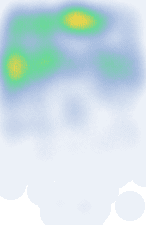
Although Ronaldo is not as good in dribbling, his off the ball runs and ability to find and drop in a score-friendly position makes Portugal direct their attacks towards him and set the play up before concluding it to him.Another aspect which makes Portugal’s tactical plan set around Ronaldo is his reliance on his teammates to create the attack for him while he plays with his back towards the goal. This makes Portugal free Ronaldo of other duties including creating while letting only the other resources to commit to it. Specifically, this eventually necessitates the use of fullbacks in the advanced roles or of wingers to have Ronaldo assume a freer role at the attacking end.In short, Ronaldo is where Portugal’s most attacks and passing plays conclude. This is also shown in the passing map of their group-stage fixture against Spain in Russia 2018, provided by @11tegen11 using OPTA data. The direct passing plays are revolving around Ronaldo while Guedes is assigned a more tactical role to create spaces for Ronaldo.

Playing with a focal point also restrains Portugal’s central midfielders and so they are not so likely to be withdrawn. In fact, Portugal’s game is mostly centred towards the left plane while wingers from the right also tend to cut in deep or to the left plane.
The notion of having Ronaldo as the centre of gravity of Portugal’s attack also signifies how Portugal survives in his absence. Well, it can go either way, there seems no conversion of the attacking attempts or the players being withdrawn from their position while redirecting their attack. For instance, against France in Euro 2016 Final, the removal of Ronaldo from the field due to injury forced Portugal to play without Ronaldo as the target man which caused the leading use of flanks in creating attacks, as shown in the passing map below, provided by @11tegen11 using OPTA data.
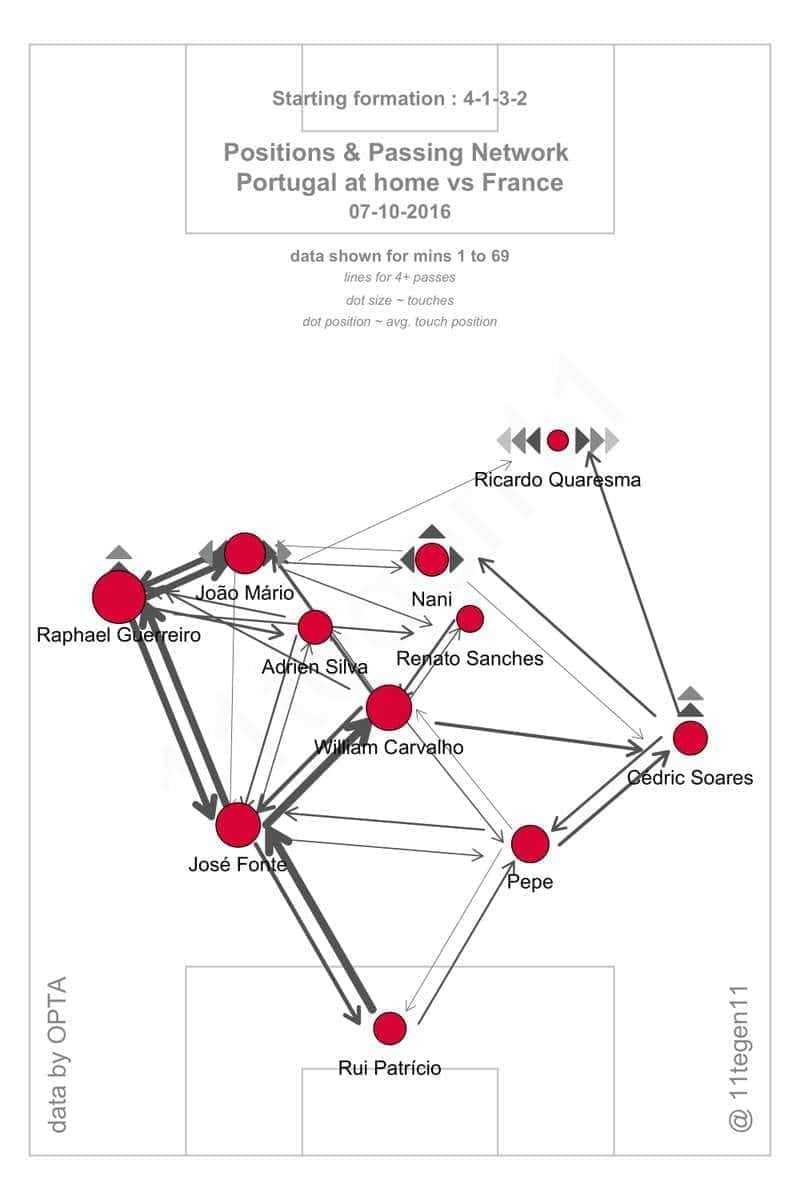
That fixture against France not only indicates the central role of Ronaldo in Portugal’s attacking plan but also emphasizes the use of flanks in situations when Ronaldo is being multi-pressed, not in the form, or when an attack from the deep is almost impossible. In such cases putting Ronaldo as a focal point only works tactically to distract defenders. For example, against Iran’s deep horizontal defence, even though Ronaldo was still the focal point of Portugal’s attack, the fullback Quaresma was the carrier of most direct attacks and the one who scored the goal while cutting in from the flank. The midfielder Adrien Silva helped to create the space for the fullback. This is obvious from the pass network of Iran vs Portugal, provided by @11tegen11 using OPTA data. The direct attacks were then kept orienting to the right flank given the intense pressing on Ronaldo by Iran.
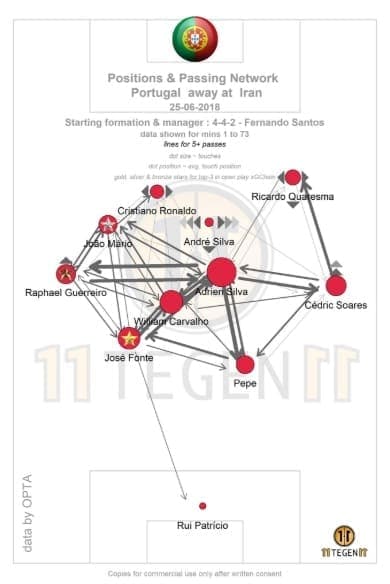
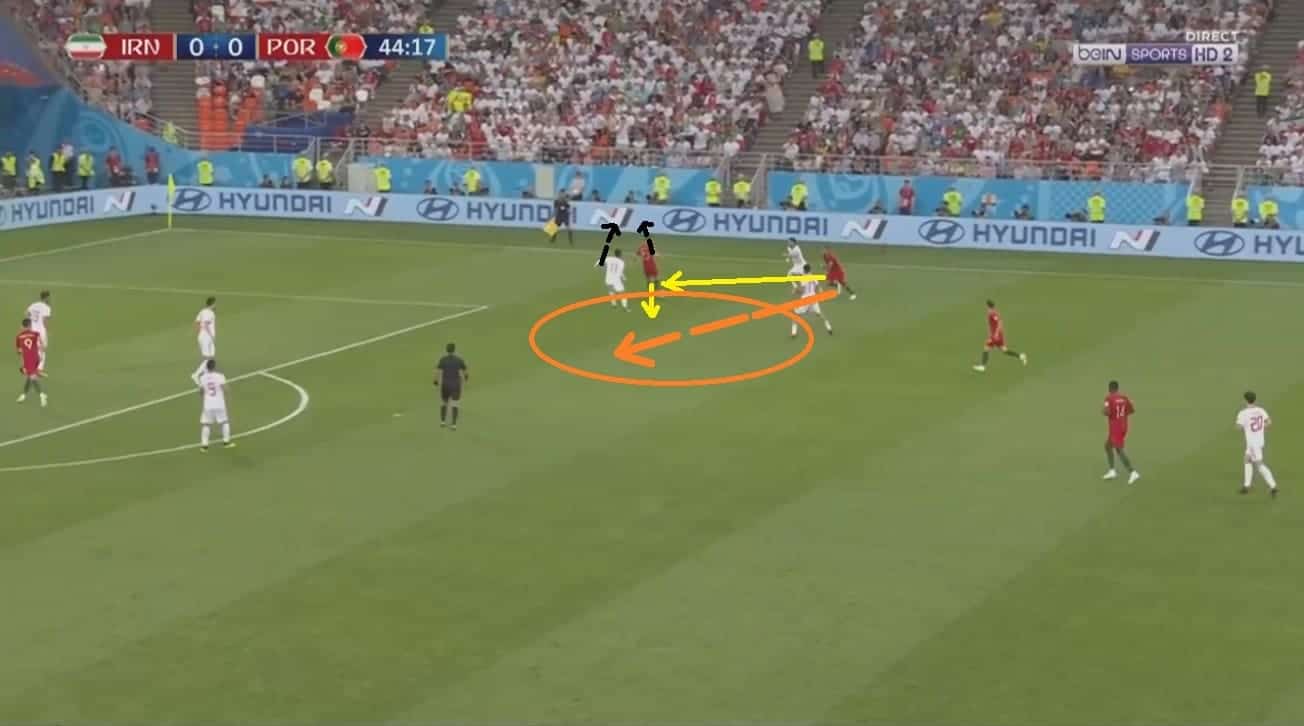
Passing incoherency – a drawback
Although a tactical set up built around a strong focal point such as Ronaldo, who has free roaming role, is a reliable model, it also has some drawbacks. With the attacks need to be set up around a target man, the passing structure can go incoherent especially in the midfield and deeper regions. The attacking structure of Portugal seems more like an incoherent structure with individuals disjointly contributing to a unidimensional attack than a coherent passing play which could get through the hard defence lines. The fixtures against Iran and Morocco in the group stage of Russia 2018 are two of the many examples. Besides, the fixture against Germany in the group stage of Brazil 2014 where Portugal lost conceding four goals further highlighted their lack of coherency.
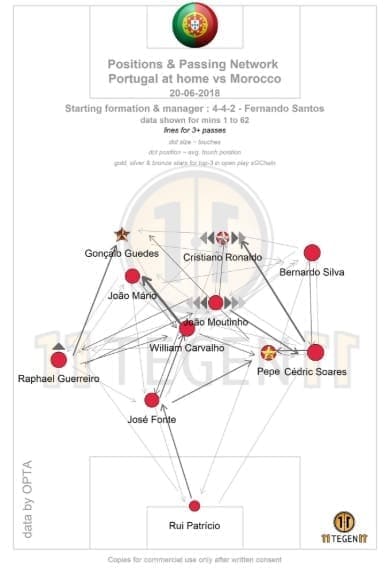
Counter-attacking
With Ronaldo as a focal point as well a penalty-area poacher who is capable of converting opportunities off the chances either created tactically or randomly, Portugal is bound to play on counters on and off and to make the use of transitions from defence to attack. Portugal mostly concedes possession and is comfortable to sit at the back while looking for opportunities of initiating direct attacks or instant counters out of the transitions.
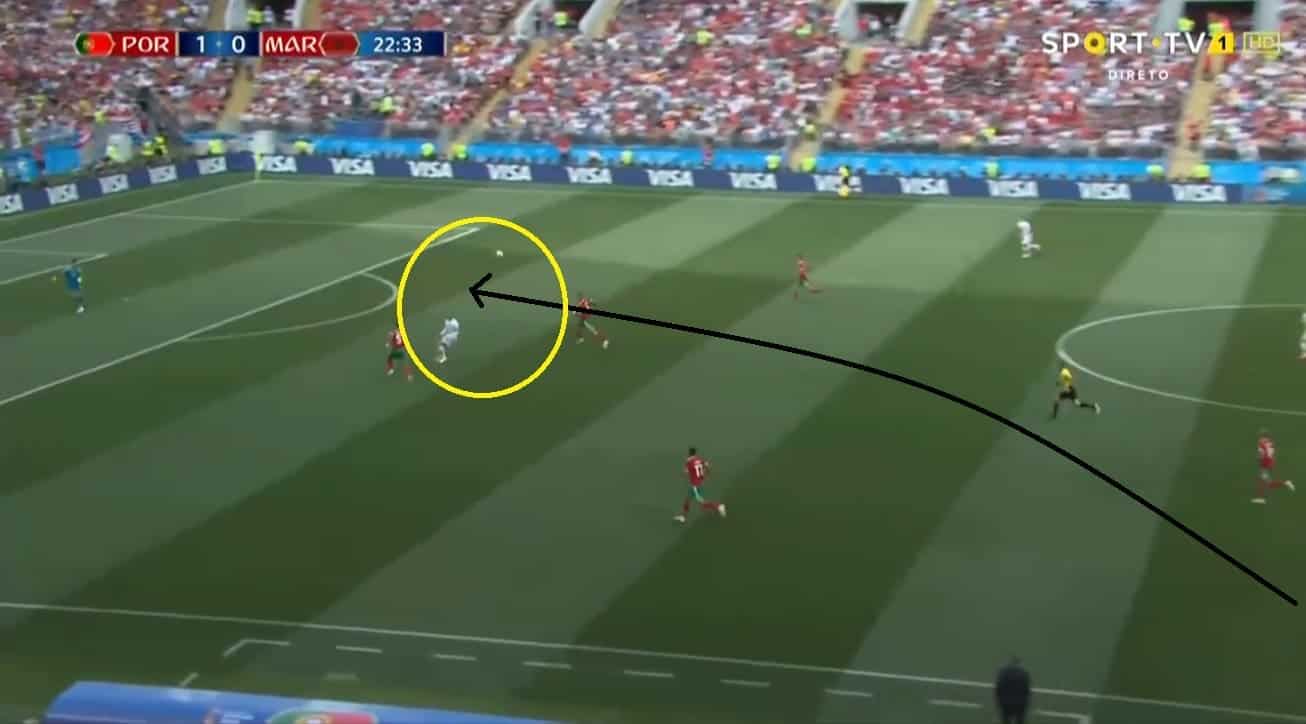
The work rate and fast running of Ronaldo enable Portugal to play instant counters even from the far back. Besides, when out of possession and the ball is in the opponent half, Ronaldo and co are there to fore-press. The forepressing strategy allows Portugal to keep their play associated to the final third. The advanced players even gegen-press their opponents in the final third to get the possession in their offensive half of the pitch and keep the play short.
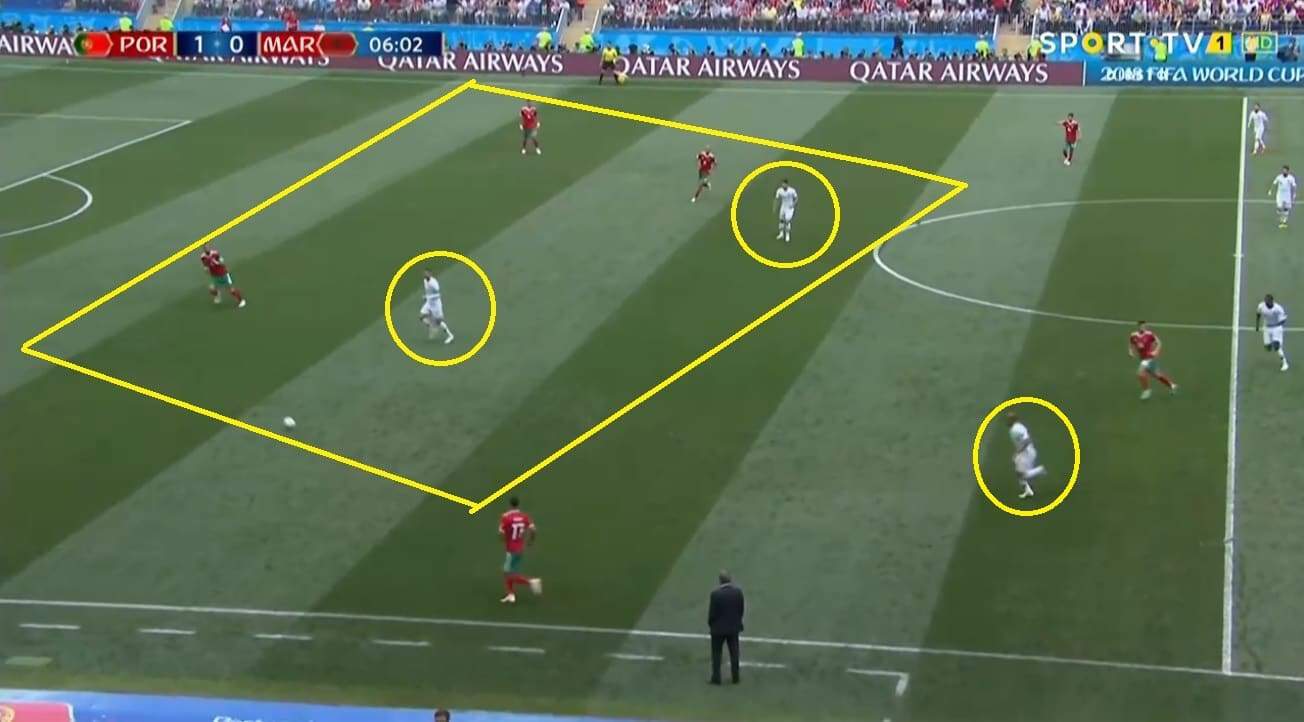
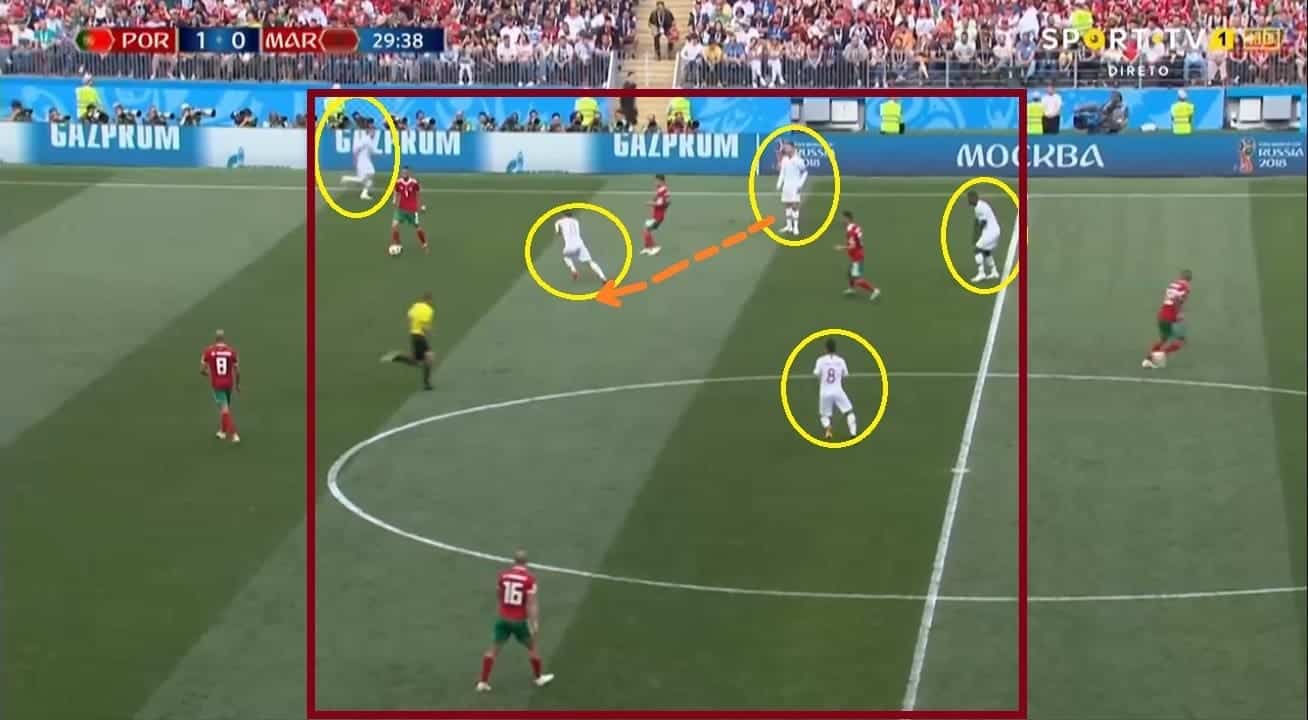
Thus, by sitting back while looking for counters as well as forepressing, Portugal could initiate both long as well as short attacks and thus can play well to Ronaldo’s strengths in almost all manners.
Creating unexpected attacking threats
Portugal could and has made the best out of Ronaldo’s strengths due to his free roamer role. He could drop back or to either flank from his favourite deep central attacking role. In fact, in some instances, Ronaldo being a free man dropped to the right half space and penalty areas to join the respective advanced players. This not only distracts the defenders and gives a tactical advantage to Portugal when in possession but also enables them to create attacks from unexpected spots.
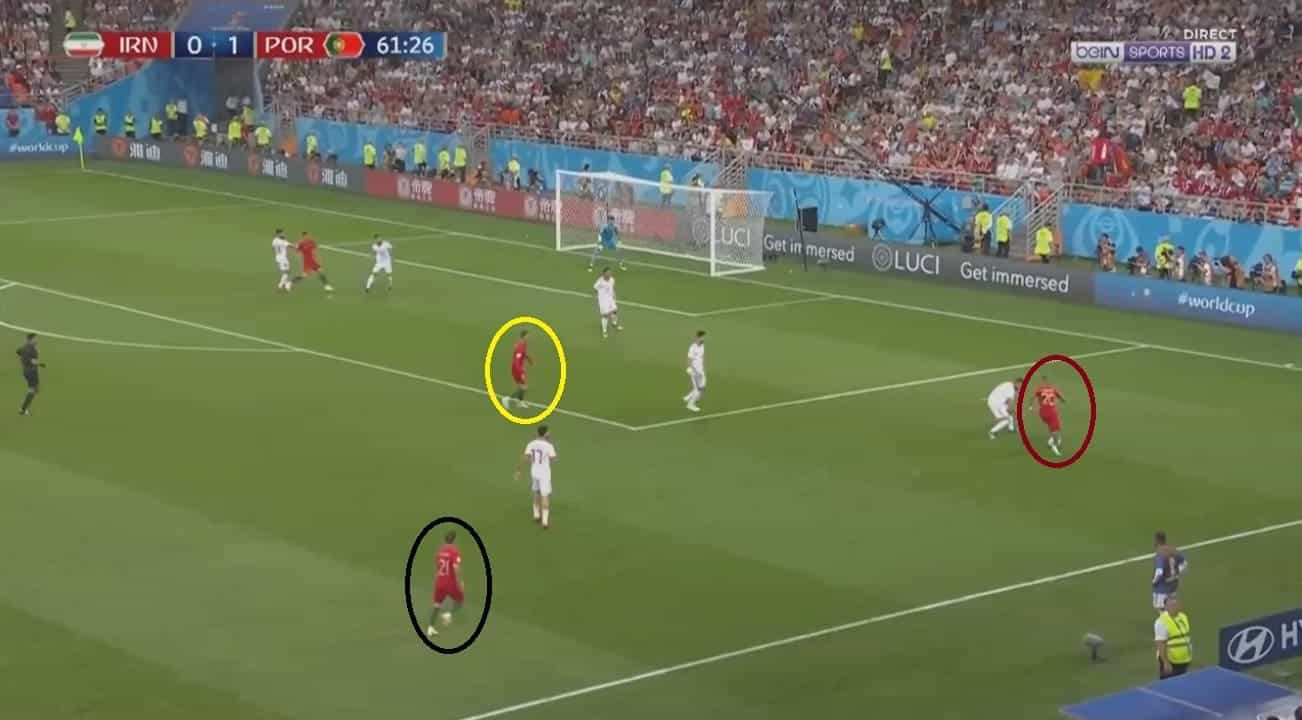
Since Ronaldo is able to read where the ball is going to land and can adjust his speed and timing accordingly, this has enabled Portugal to create attacks just directing towards Ronaldo without worrying much of how he would set himself up for the finish. Moreover, the ability of the Real Madrid star to score off the tiniest of spaces with a sudden tap-in when in front of the crossbar along with scoring off the longshots when having enough space has made him a threatening clinical finisher.Ronaldo is often seen to be outside the passing circle when his team is in possession. While the passing play does mean to create attack but tactically it distracts defenders and as a result, the play concludes to a slightly far off region outside the passing circle where Ronaldo does or is about to position himself for a hard finish.
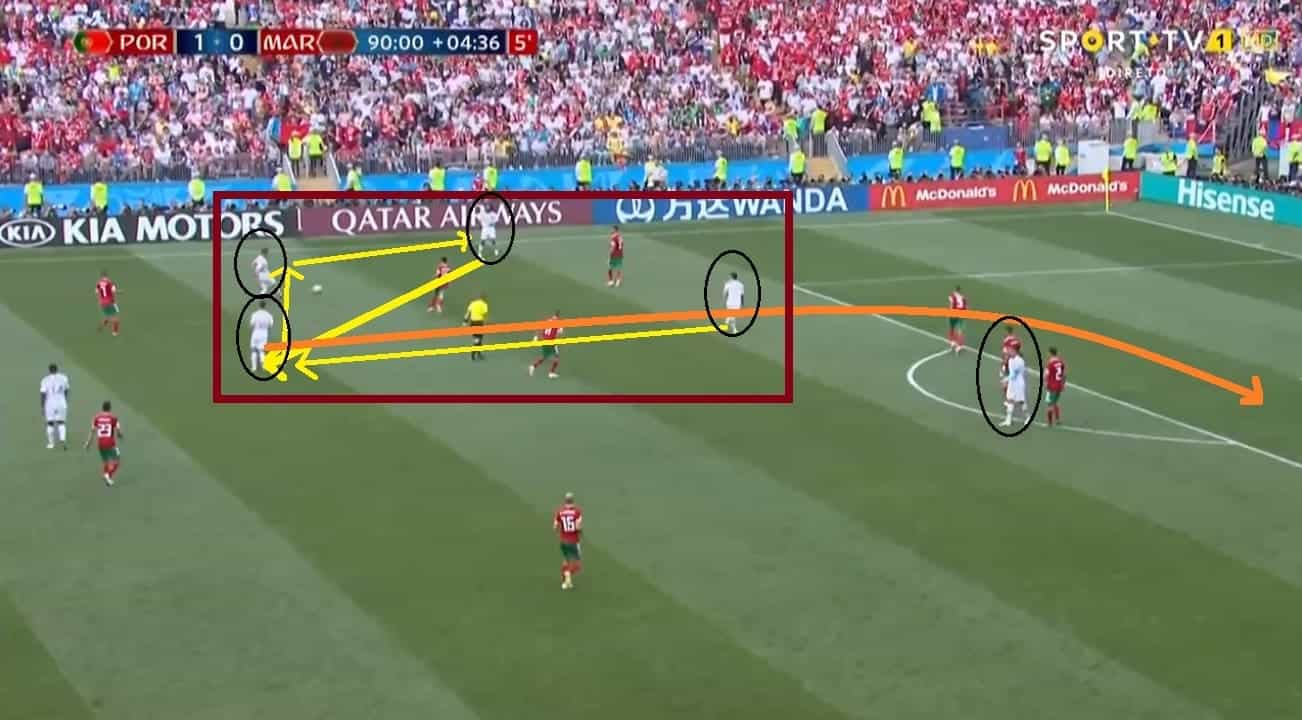
Deep attacking
Due to Ronaldo plays at his best in the deeper regions, Portugal is more likely to direct their game to the deeper regions including the half spaces and that’s where Ronaldo is most likely to connect to his teammates in the final third. Even when he drops off the flank to contribute to a passing play, he likes to cut inside too often.
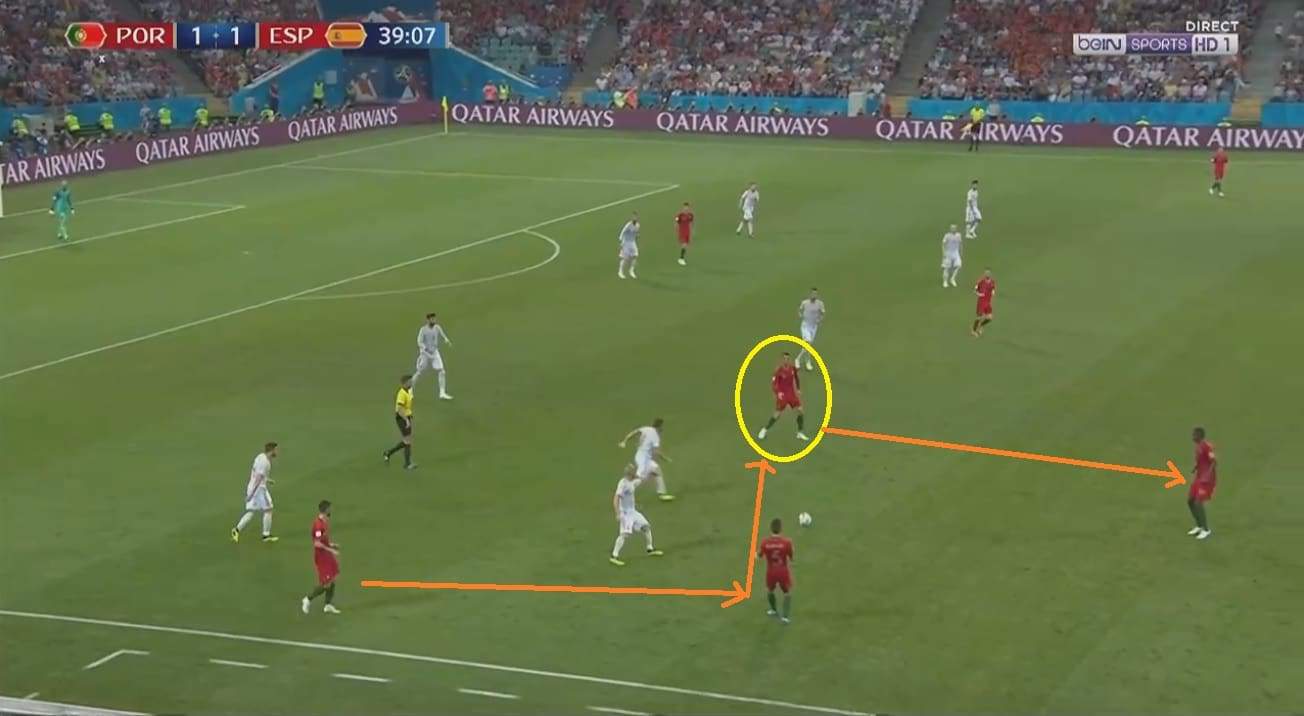
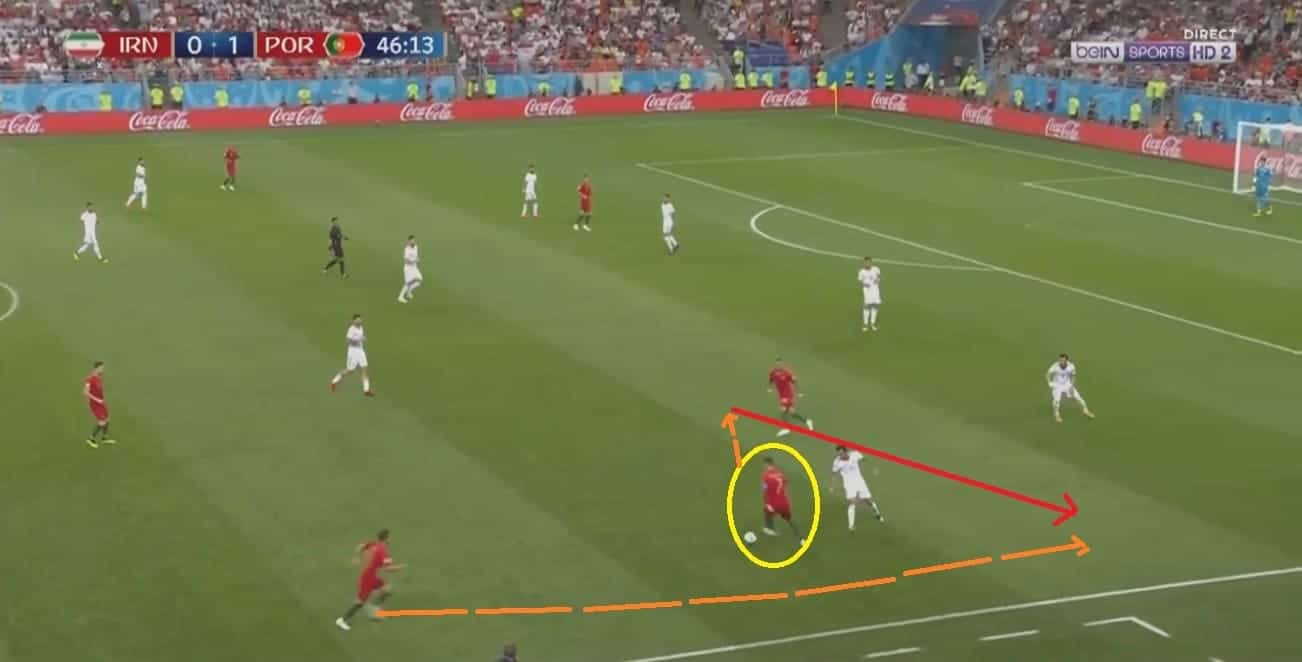
Besides, playing deep also allows Portugal to pressurise opponents and force them to make defensive errors thus winning dead balls. With Ronaldo being a set piece specialist, Portugal has strong reliance to score off the dead balls. In the recent group stage fixture of Russia 2018, Ronaldo scored two goals of his hat-trick off the dead balls against Spain. Thus, the attack which could create from almost all fronts due to the free roaming role and ball reading abilities of Ronaldo mostly conclude on the deeper fronts.

Conclusion
To sum up, Ronaldo is a clinical and an economical finisher. He has an innate ability to exploit the areas behind the defence and he knows how to get in there. From deploying him as the goal machine to allowing him a free roaming role, Portugal has time and again utilised Ronaldo’s strengths. His leadership has also played a great part in motivating his team off the bench to play for him – an example of Euro 2016 Final – implying not only his technical but psychological role in lifting up Portugal at times. Though Portugal’s strategy to centralise their play around him could turn as a drawback too, which makes the strategy vulnerable at other times.

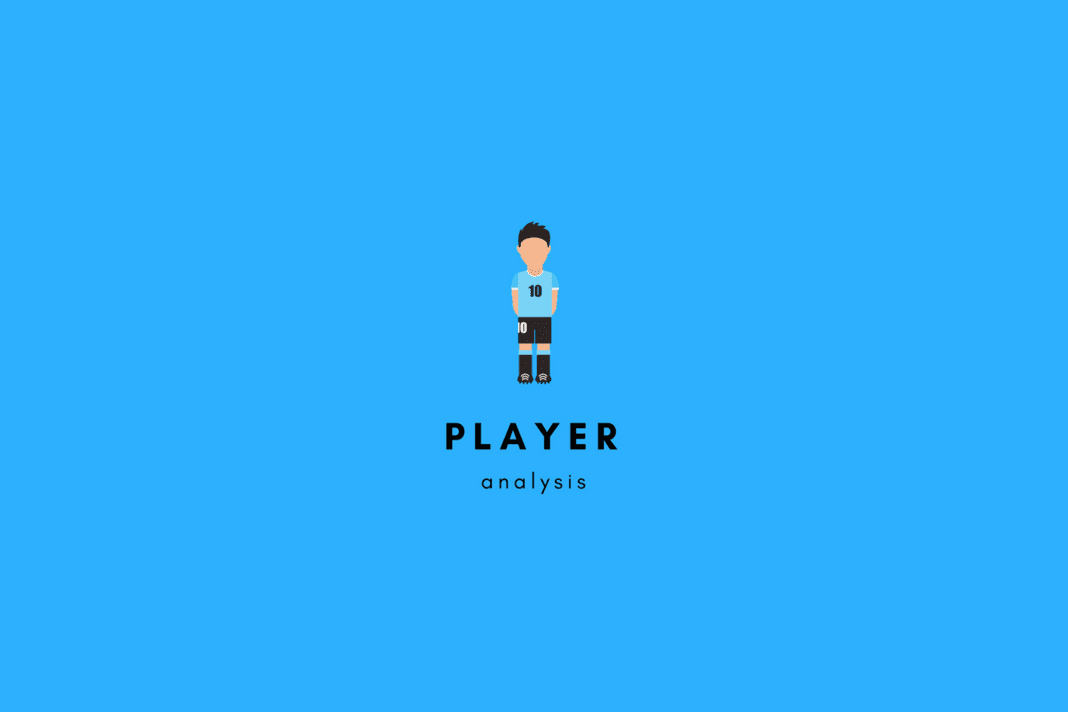



Comments